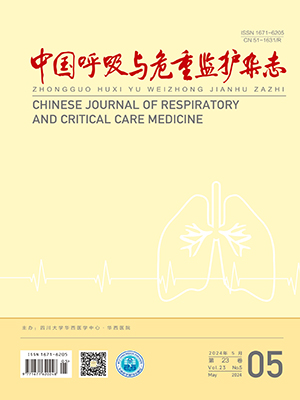Objective To investigate the feasibility of dexmedetomidine hydrochloride in sedation practices during NPPV for patients with acute exacerbation of COPD ( AECOPD) and respiratory failure.
Methods 50 patients with AECOPD and respiratory failure, admitted in ICU between January 2011 and April 2012, were divide into an observation group and a control group. All patients received conventional treatment and noninvasive positive pressure ventilation ( NPPV) . Meanwhile in the observation group, dexmedetomidine hydrochloride ( 1 μg/kg) was intravenously injected within 10 minutes, then maintained using a micropump by 0.1 ~0. 6 μg·kg- 1 ·h- 1 to maintaining Ramsay Sedation Scale ( RSS) score ranged from 2 to 4. The patients’compliance to NPPV treatment ( conversion rate to invasive ventilation) and ICU stay were compared between two groups. Heart rate,mean arterial pressure, respiratory rate, and arterial blood gas ( pH, PaO2 , PaCO2 ) before and 24 hours after treatment were also compared.
Results After 24 hours treatment, heart rate, mean arterial pressure, respiratory rate, and arterial blood gas were all improved in two groups, while the improvements were more remarkable in the observation group. The conversion rate to invasive ventilation ( 4% vs. 16% ) and ICUstay [ ( 5.47 ±3.19) d vs. ( 8.78 ±3.45) d] were lower in the observation group than those in the control group. ( P lt;0.05) .
Conclusion Dexmedetomidine hydrochloride may serve as a safe and effective sedative drug during NPPV in patients with AECOPD and respiratory failure.
Citation: CHEN Qijiang,SHI Zongqu,XUE Qijun,WANG Ping. Application of Dexmedetomidine Hydrochloride in Sedation Practices during NPPV for Patients with Acute Exacerbations of COPD and Respiratory Failure. Chinese Journal of Respiratory and Critical Care Medicine, 2013, 12(1): 29-31. doi: 10.7507 /1671 -6205.20130007 Copy




